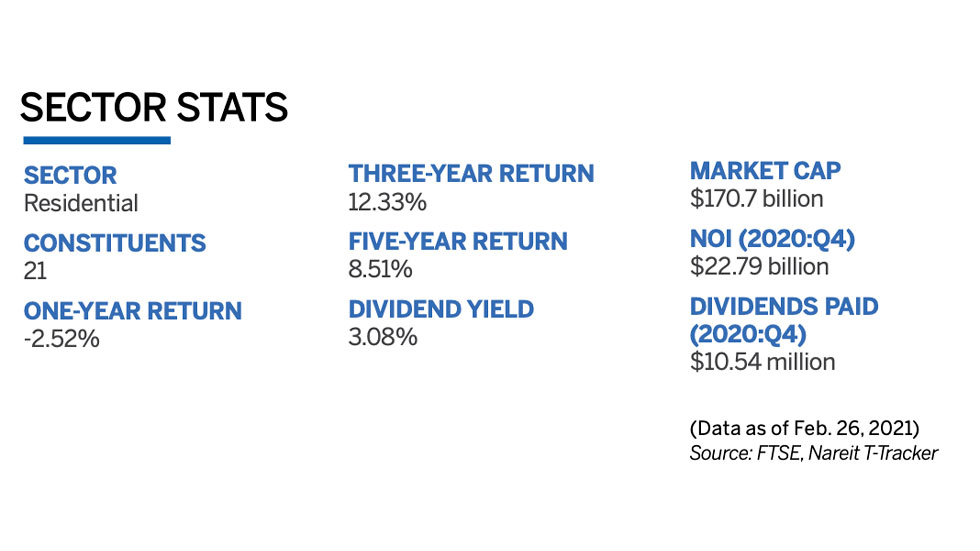The pandemic touched nearly all aspects of peoples’ lives—and commercial real estate. One thing that didn’t change, though, is that everyone needs a place to live, and overall demand for residential properties has been firm.
Residential markets have been mixed, however, some downtown markets were negatively impacted as WFH loosened geographic preferences based on commuting. Other markets benefited from a desire for space for residents.
Apartment markets softened in major cities as move-ins slowed. Other markets—suburban, secondary cities—remain firm. Markets were tight prior to the recession, however, and are likely to recover in the post-vaccine world.
Manufactured housing provides a lower-cost alternative to a traditional structure for families, vacation homes, and retirement living, with attractive neighborhoods and amenities.
Single family rental provides homes for lease in desirable neighborhoods. These homes are professionally managed, with space and access to suburban schools for families not ready for homeownership.
Residential prices remain firm despite the pandemic. Prices of single-family homes are rising rapidly as low interest rates and households seeking to avoid dense locations spur demand, and prices of apartment properties continue rising due to relatively scarce supply.

